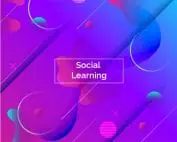What is true workplace diversity and inclusion?
Recognising and embracing the value of workplace diversity has moved at pace in the business and corporate world in recent years. However, despite the progress, there is still a long way to go. Read some of the practical steps an organisation can take in our briefing.
TEST HEADLINE GOES IN HERE
0 1
The benefits of Workplace Diversity.
Mature and diverse companies are now working across many borders, cultures, languages and inter-generationally. By default, this demands a more inclusive approach, which has many residual benefits. Building a diverse organisation offers greater access to talent pools, helps employees feel safe, boost morale, loyalty and work ethic. There is also an increasing requirement to show policy driven equality and demonstrate social impact when entering major bids and tenders.
The law and regulation in most economies is now recognising the benefits and mandating inclusiveness and open recognition of people’s differences. It is critical for all business managers to recognise, understand and act on all forms of prejudice. This means within themselves, the work environment and towards all their stakeholders, including customers and job seekers.
Stereotype v bias v prejudice
A stereotype is an often oversimplified image where one generally thinks that most or all members of a group are the same. A bias is much more subtle and is often a programmed preference that can often inhibit impartial decisions. A prejudice, whether conscious or unconscious, is an overt set of behaviours or actions that will actively restrict, exclude or punish an individual or group.
A long list of workplace discrimination
Ableism. Prejudicial behavior against people with disabilities.
Ageism. Discriminatory beliefs and behaviors aimed at people because of their age.
Anti-Semitism. Discriminatory beliefs and acts directed against Jewish people.
Classist. Discriminatory beliefs and behaviors based on differences in social class, generally directed against poorer backgrounds.
Ethnocentrisms. Discrimination based on ethnic differences.
Heterosexism. Prejudice against gay men, lesbians, and trans-genders.
Islamophobia. Prejudice against those from the Islamic world.
Linguistic discrimination. Prejudice based on someone’s native language.
Maternal Wall. Discrimination against pregnant women.
Nationalism. Classifying an entire nation and its people negatively and prejudicing against.
Neurological discrimination. Discriminating against those whose thinking or mental and other conditions are different. (for example, those with Tourettes)
Racism. A system of privilege and penalty based on one’s race
Religious discrimination. Discriminatory beliefs and behaviors directed against people of faith, whether Buddhist, Christian, Hindu, Humanist, Atheist etc.
Sexism. Discriminatory beliefs and behaviors directed primarily against women.
Research shows that companies with equality statements have an edge in recruiting qualified candidates.
0 2
A deeper dive into some of the main prejudices.
Ableism: Most cultures have mature and well defined law and regulation for the provision of those with physical impairments. Modern buildings and transportation must be suitable for both able bodies and disabled individuals.
When it comes to accessibility in the workplace, it is more than just about the work site itself. An organisation at its core, should embrace the value of those from different backgrounds and life experiences.
Ageism: In many countries, there are laws protecting employees over a certain age from discrimination, particularly in the hiring process, compensation and termination situations. There is also plenty of best practice available through professional associations.
In our course on The Generation Gap at Work, we explore how as older staff are forced to delay their retirement as millennials enter the workforce. This means organisation needs to understand the diverse talent and manage the challenges of a diverse workforce and differing career paths.
Sexism. It is largely the female working population that has been on the wrong end of sexism. This ranges from the more overt harassment to the more systemic problems of wage disparity, maternity policy and glass ceiling. More and more mature economies are removing these barriers but there is much still to do.
As well as more overt examples, it’s important to understand and guard against indirect discrimination. This is where a policy or rule put in place, applies to everyone in the same way, but has a worse effect on some, putting them at a disadvantage. A policy must apply to everyone in the same way.
Tech savvy? An ageist misconception
Ensure that recruitment drives don’t carry implicit age bias, ie only recruiting on a university campus.
In our course you will cover the following topics
- Understanding diversity and dealing with issues and complaints
- Racial, sexual, cultural and religious diversity
- Creating diversity initiatives
- Sensitivity training in an organisation
- HR and best practice
Workplace diversity brings an organisation many different viewpoints, which is positive for the growth of individual employees and the company as a whole. Benefits include:
- A much larger pool of knowledge and experience to build your decisions and directions from
- Fulfilling the needs of your existing customers
- Giving your organisation an empathy and appeal to a larger, global customer base
- Loyal employees who feel recognised and appreciated, paying multiple dividends to an organisation
- Compliance to any local legal and regulatory requirements
How to manage diversity in the workplace is part of the Human Resources function. Backed by a written diversity policy, HR must communicate these requirements to leadership, who must be compliant. Skills such as effective communication, treating each employee uniquely, promoting the collaboration of diverse groups and being open-minded, are essential manage diversity and communication diversity effectively.
We typically make a judgment about someone in the first 30 seconds. Start by observing your personal approach to diversity, try these steps when you make contact with a new person:
- Gather information
- Separate out fact from opinion
- Make judgment based only on facts
- Try to continue expanding your opinion of a person’s potential.
- Seek information and training to develop self awareness
- Spend some time looking at your own attitudes and behaviors
- Evaluate your use of terms, phrases, or behaviors that may negatively impact others
- Openly confront a discriminatory comment, joke, or action
- Risk a positive stand against discrimination
- Become increasingly aware of discriminatory TV programs, advertising, news broadcasts, slogans, slang etc
- Learn some of the language, culture and values of those in your diverse community
- Be proactive
- Support top-down, leadership-driven initiatives
- Promote ownership of issues throughout the organization
- Think and behave inclusively
- Make diversity a part of as many initiatives as possible.
0 3
How to build an inclusive Workplace Diversity program.
Conduct a diversity audit to understand where an organisation is and wants to be. Undertake a document review and internal focus groups and surveys. Typical outputs are new policy documents, correct tone of voice and language, awareness training campaigns.
Develop and implement policy across the organisation ensuring you cover these areas.
Define what discrimination is in the context of your organisation. Include language about prohibited conduct, complaint procedures, intolerance of retaliation, responsibilities of managers, and corrective action the company will take upon violation.
Define harassment. Clearly state it is prohibited, describe the complaint procedure, explain that retaliation is prohibited, lay out managers’ responsibilities. Explain what process the organization will follow for investigation and corrective action.
Educate managers and staff about what constitutes discrimination. Look at preventative behaviours, training on how spot and remedial approaches followed by subsequent procedures if there is a breach.
Sensitivity training. Employees report being better able to make decisions. This is because they are aware of their biases and how these might play into decision making; this awareness allows them to make different choices.
In conclusion, implementing an inclusive environment and authentic approach to workplace diversity will add many benefits to your organisation, both now and in the future. If you want to know more, we have two courses below you can sign up for to give you greater insights.
This is one of our executive briefings taken from our series of professional online business short courses from ELL. We have over 150 courses online with over 1,000 hours of e-learning covering a wide range of topics across leadership, management and personal & professional development created by industry experts and learning professionals.
Diversity and Inclusion Courses
The workplace has been fundamentally changing over recent years, moving towards being more open, accepting and understanding of the differences in its staff and how diversity adds value. Leading global businesses embrace this while governments force those who slow or refusing to change with the times. We have several courses, including Workplace Diversity Diversity and Inclusion, and the Generation Gap at Work both of which can be studied immediately.
By the end of these courses, you’ll be able to:
- Have a comprehensive for how diversity adds value to an organisation
- Recognise how to support and work with diverse constituencies
- Break down barriers that come with stereotypes
- Identify areas of concern and how to deal with issues
- Deal practically with cases of discrimination
In each of our business courses, you get access to around six hours of e-learning that you can watch, listen and read. There are usually 100 questions and at the end of the course you will receive a certificate of completion that you can use against any personal or professional development requirements. As well as the course, you also receive a FREE e-book that you can read on your Kindle or other e-reader. You also get a FREE audiobook of the course so you can listen to the whole course uninterrupted on your device.














